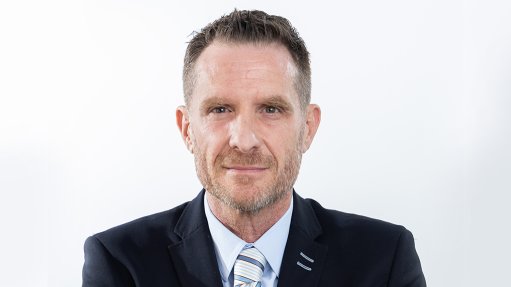Gas resources to meet future power demand
Following its recent and substantial oil and gas discoveries, Senegal is preparing to ensure that its vast natural gas resources help meet future electricity demand and put an end to the excessive electricity prices undermining its economy.
Senegal’s domestic gas reserves will mainly be used to produce electricity. Authorities expect that domestic gas infrastructure projects will come online between 2025 and 2026, provided there is no delay, says Wärtsilä senior analyst Joonatan Huhdanmäki.
Global technology group Wärtsilä conducted in-depth studies that analyse the economic impact of the various gas-to-power strategies available to Senegal. Two different technologies are competing to meet the country’s gas-to-power ambitions, which are combined-cycle gas turbines (CCGTs) and gas engines (ICEs).
Contrary to prevailing beliefs, ICEs are better suited than CCGTs to harness power from Senegal’s new gas resources cost-effectively, the study reveals. Total cost differences between the two technologies could reach as much as $480-million until 2035.
Two Competing Technologies
The energy mix models developed by Wärtsilä show that ICE and CCGT technologies present significant cost differences for the gas-to-power new-build programme running to 2035.
Huhdanmäki states that hot climates negatively impact the output of gas turbines more than it does that of gas engines.
Further, owing to low gas prices decreasing operating costs, it is financially sound for the country to rely on ICE power plants, which are also less expensive to build.
Technology modularity also plays a key role. Senegal is expected to require an extra 60 to 80 MW of generation capacity each year to be able to meet the increasing demand. This is much lower than the capacity of typical CCGT plants which average between 300 and 400 MW that must be built in one go, leading to unnecessary expenditure. Engine power plants are modular, which means they can be built exactly as and when the country needs them, and further extended when required.
The model shows that if Senegal chooses to favour CCGT plants at the expense of ICE plants, it will lead to as much as $240-million in extra costs for the system by 2035. The cost difference between the technologies can even increase to $350-million in favour of ICE technology if Senegal also chooses to build new renewable energy capacity within the next decade.
Although these two technologies are equally proven and reliable, they are very different in terms of the profiles in which they can operate, adds Huhdanmäki.
CCGT is a technology that has been developed for the interconnected European electricity markets, where it can always function at 90% load factor. ICE technology can operate efficiently in all operating profiles, and seamlessly adapt itself to any other generation technologies that will make up the country’s energy mix.
The study reveals that when operating in an electricity network of limited size such as Senegal’s 1 GW national grid, relying on CCGTs to significantly expand the network capacity would be exceedingly costly.
Wärtsilä explains that the development of gas infrastructure is a complex and lengthy endeavour. Programme delays are not uncommon, causing gas supply disruptions that will have a huge financial impact on the operation of CCGT plants.
Last year, significant gas supply issues caused shutdowns at some of the country’s largest gas turbine power plants. Gas turbines operate on a continuous combustion process, they require a constant supply of gas and a stable dispatched load to generate consistent power output. If the supply is disrupted, shutdowns occur, putting a great strain on the overall system.
ICE gas plants are designed to adjust their operational profile over time and increase system flexibility. Due to their flexible operating profile, they are able to maintain a much higher level of availability.
The study took a deep dive to analyse the financial impact of two years delay in the gas infrastructure programme. If the country decides to invest into ICEs, the cost of gas delay would be $550-million, whereas a system dominated by CCGTs would lead to a staggering $770-million in extra cost.
New ICE gas generation capacity will minimise the total cost of electricity in Senegal in all possible scenarios. If Senegal is to meet electricity demand growth in a cost-optimal way, at least 300 MW of new ICE gas capacity will be required by 2026.
Article Enquiry
Email Article
Save Article
Feedback
To advertise email advertising@creamermedia.co.za or click here
Comments
Press Office
Announcements
What's On
Subscribe to improve your user experience...
Option 1 (equivalent of R125 a month):
Receive a weekly copy of Creamer Media's Engineering News & Mining Weekly magazine
(print copy for those in South Africa and e-magazine for those outside of South Africa)
Receive daily email newsletters
Access to full search results
Access archive of magazine back copies
Access to Projects in Progress
Access to ONE Research Report of your choice in PDF format
Option 2 (equivalent of R375 a month):
All benefits from Option 1
PLUS
Access to Creamer Media's Research Channel Africa for ALL Research Reports, in PDF format, on various industrial and mining sectors
including Electricity; Water; Energy Transition; Hydrogen; Roads, Rail and Ports; Coal; Gold; Platinum; Battery Metals; etc.
Already a subscriber?
Forgotten your password?
Receive weekly copy of Creamer Media's Engineering News & Mining Weekly magazine (print copy for those in South Africa and e-magazine for those outside of South Africa)
➕
Recieve daily email newsletters
➕
Access to full search results
➕
Access archive of magazine back copies
➕
Access to Projects in Progress
➕
Access to ONE Research Report of your choice in PDF format
RESEARCH CHANNEL AFRICA
R4500 (equivalent of R375 a month)
SUBSCRIBEAll benefits from Option 1
➕
Access to Creamer Media's Research Channel Africa for ALL Research Reports on various industrial and mining sectors, in PDF format, including on:
Electricity
➕
Water
➕
Energy Transition
➕
Hydrogen
➕
Roads, Rail and Ports
➕
Coal
➕
Gold
➕
Platinum
➕
Battery Metals
➕
etc.
Receive all benefits from Option 1 or Option 2 delivered to numerous people at your company
➕
Multiple User names and Passwords for simultaneous log-ins
➕
Intranet integration access to all in your organisation


















